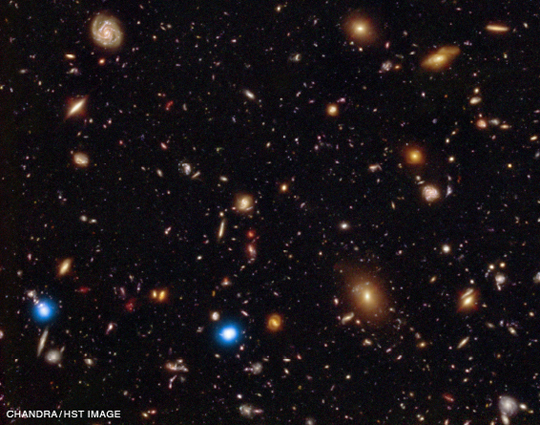"There are at least 30 million supermassive black holes in the early universe.”
- NASA Chandra X-ray Center
“We know from observations of nearby galaxies, starting with our own Milky Way - but also extending to other galaxies in the nearby universe - we can actually deduce the presence of their local black holes and find that every galaxy probably does have a black hole at its center.”
- Mitchell Begelman, Ph.D., Dir., JILA; Prof. of Astrophysics, CU-Boulder

June 29, 2011 Boulder, Colorado - On June 15, 2011, NASA hosted a TV press conference with several astrophysicists, including Prof. Mitchell Begelman, Ph.D., Director of the Joint Institute for Laboratory Astrophysics (JILA) and Prof. of Astrophysics, University of Colorado, Boulder, Colorado. The news headline was “NASA's Chandra Finds Massive Black Holes Common in Early Universe.” The next day in the June 16, 2011, issue of Nature, astronomers described “Black Hole Growth in the Early Universe Is Self-Regulated and Largely Hidden from View.”
Click here to subscribe and get instant access to read this report.
Click here to check your existing subscription status.
Existing members, login below:
© 1998 - 2025 by Linda Moulton Howe.
All Rights Reserved.

